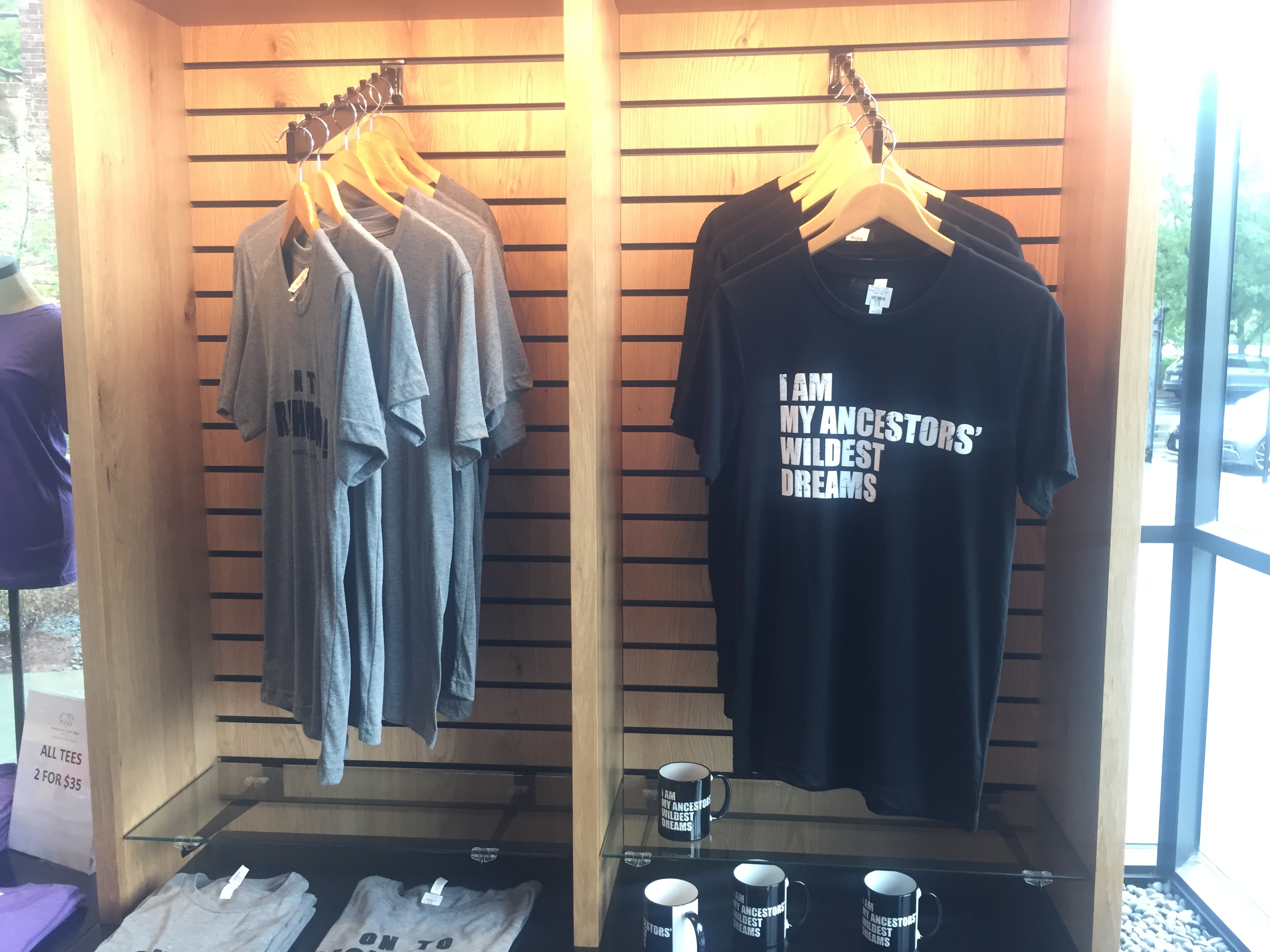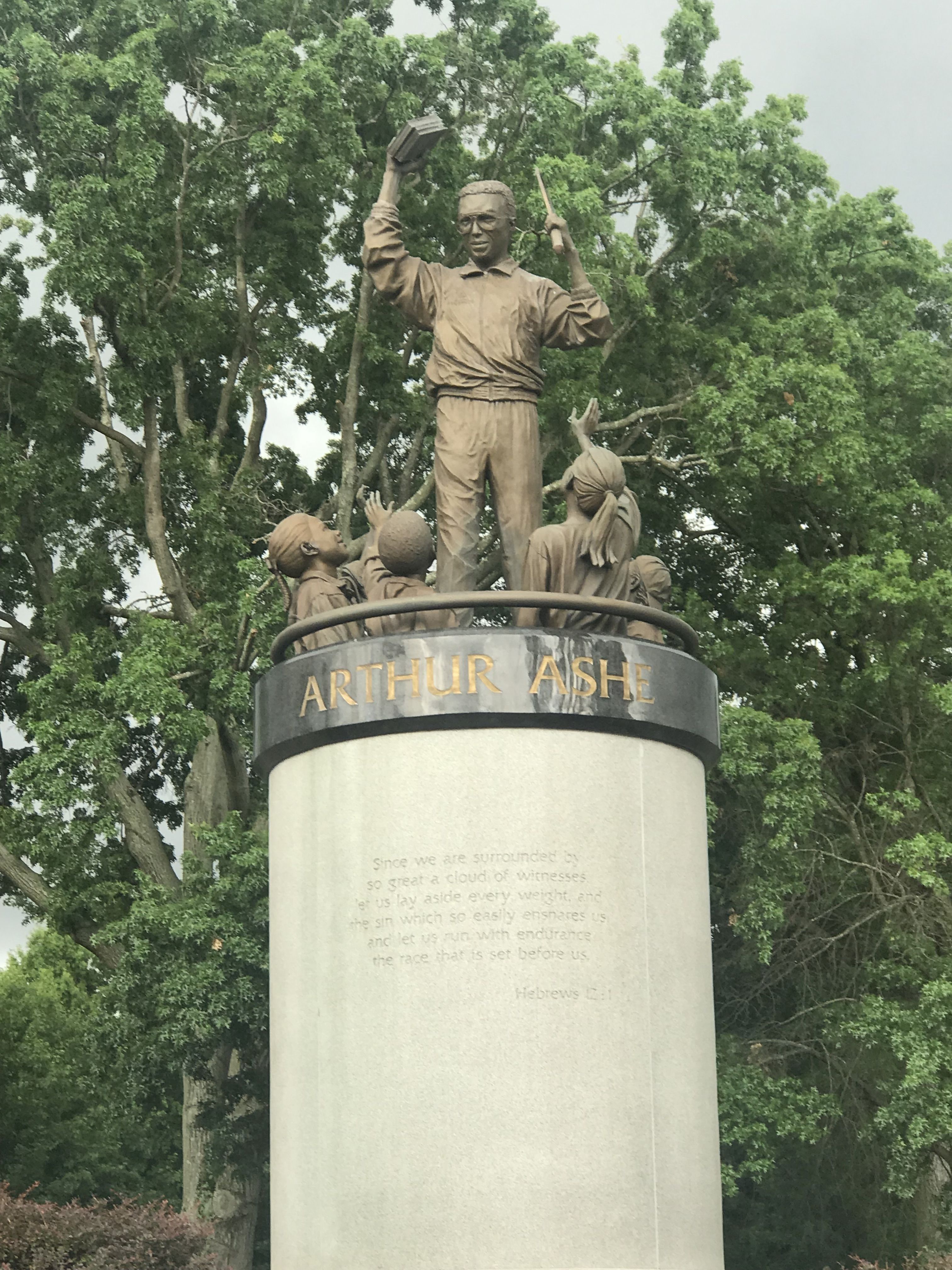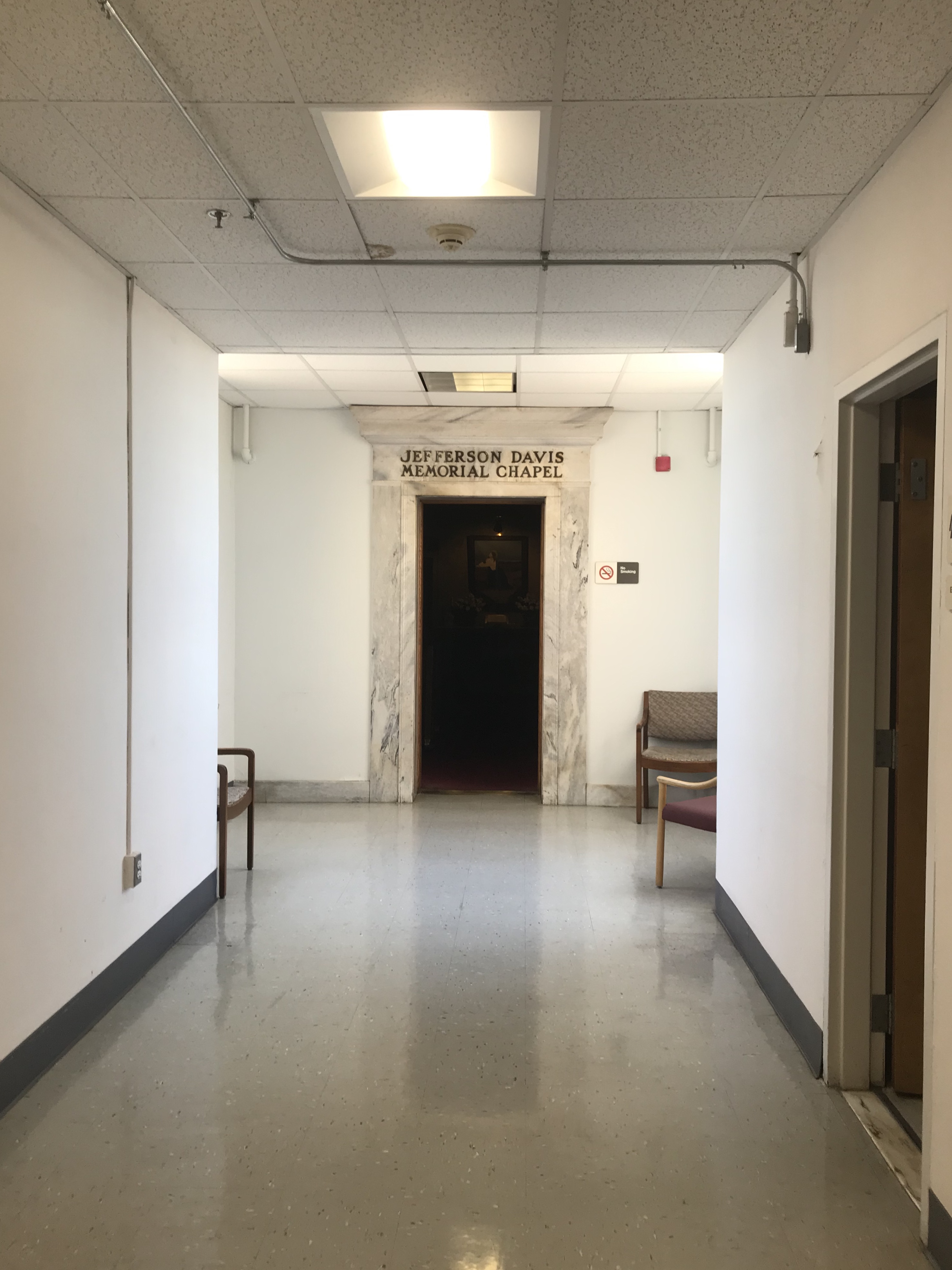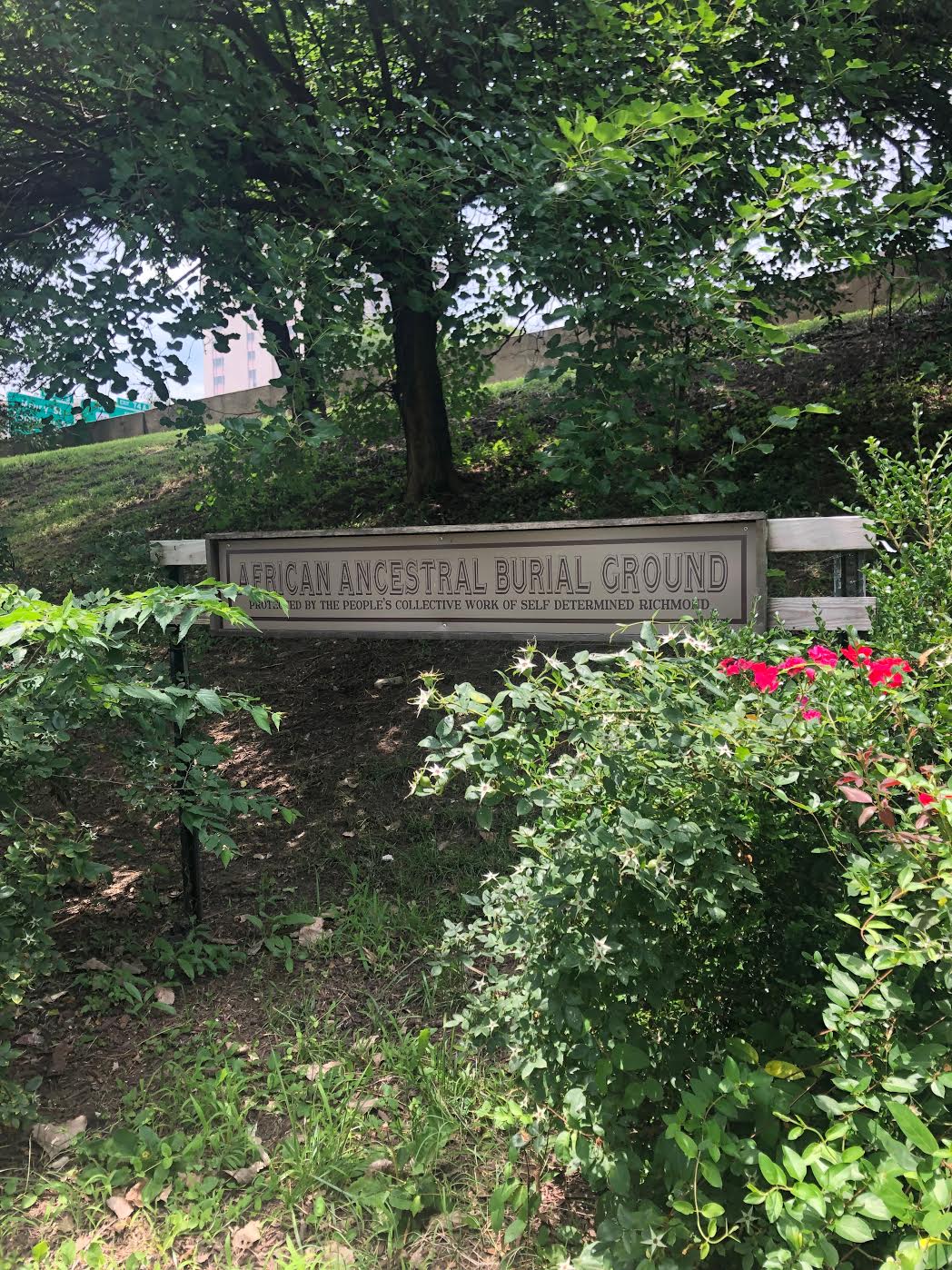by Nathan Burns
Nathan Burns is a junior from Newtown, Pennsylvania double-majoring in French and Leadership Studies and minoring in English. This summer of 2019 marks Nathan’s first time working with the Race & Racism Project. On campus, Nathan is also a writing consultant and a member of the dining services student advisory committee.
 I find it fitting to begin this blog post at the end of my experience at The American Civil War Museum mostly because of a t-shirt I saw hanging in the gift shop. Blazoned in bold white capitals against black fabric, the shirt read, “I AM MY ANCESTORS’ WILDEST DREAMS”. The phrase stayed with me as I left the gift shop and stepped into the warm summer rain. I stared back at the museum from the outside and marveled at the blend of past and present architecture, noticing the brick ruins of the historic Tredegar Iron Works enveloped by the steel and glass modern design of the current museum. In this moment, I couldn’t help but reflect on our team discussion with public historian Free Egunfemi on the topic of ancestral self-determination. I ask myself now as I write this post: how and where did I see this idea of self-determination at work in the museum’s exhibit? In other words, where did I see resistance against the traditional historical narrative of the Civil War, and how might this resistance inform the ways we remember our past in the present?
I find it fitting to begin this blog post at the end of my experience at The American Civil War Museum mostly because of a t-shirt I saw hanging in the gift shop. Blazoned in bold white capitals against black fabric, the shirt read, “I AM MY ANCESTORS’ WILDEST DREAMS”. The phrase stayed with me as I left the gift shop and stepped into the warm summer rain. I stared back at the museum from the outside and marveled at the blend of past and present architecture, noticing the brick ruins of the historic Tredegar Iron Works enveloped by the steel and glass modern design of the current museum. In this moment, I couldn’t help but reflect on our team discussion with public historian Free Egunfemi on the topic of ancestral self-determination. I ask myself now as I write this post: how and where did I see this idea of self-determination at work in the museum’s exhibit? In other words, where did I see resistance against the traditional historical narrative of the Civil War, and how might this resistance inform the ways we remember our past in the present?


 On the 17th floor of the VCU Medical Center’s West Hospital rests an unexpected beast. Sure, there’s a plaque in the 1st floor lobby that states the Jefferson Davis Memorial Chapel is just an elevator trip away, but, if I hadn’t done research before showing up, I certainly wouldn’t have anticipated seeing its marble archway behind an unmarked wooden door, sharing the hall with an employee-only restroom and a spattering of what appear to be used waiting-room chairs.
On the 17th floor of the VCU Medical Center’s West Hospital rests an unexpected beast. Sure, there’s a plaque in the 1st floor lobby that states the Jefferson Davis Memorial Chapel is just an elevator trip away, but, if I hadn’t done research before showing up, I certainly wouldn’t have anticipated seeing its marble archway behind an unmarked wooden door, sharing the hall with an employee-only restroom and a spattering of what appear to be used waiting-room chairs. I visited Lumpkin’s Jail (also known as the Devil’s Half Acre) and the African Burial Ground in Richmond–Lumpkin’s Jail was the largest slave-holding facility in Richmond during the mid 19th century. The jail historically has been home to the typical cruel and unusual treatment of enslaved people by Robert Lumpkin, who purchased the property and created a two story brick slave jail that held enslaved people until they were sold. After emancipation, a historically black seminary was founded and later on, a parking lot covered the area. We also visited the African Burial Ground, or, as it was originally titled in a city map, the “Burial Ground for Negroes.” As we learned from the historical markers on the site, it was a poor quality burial ground, with the danger of heavy rains washing the remnants and land into the James River, and also was where convicts were hung. After a new site opened, the grave site was abandoned and the construction of what would later become I-95 destroyed the land. In the 1990s, activists like Defenders for Freedom, Justice, & Equality and the Slave Trail Commission began working on commemorating and memorializing the site. It currently rests as a large field with information signs explaining the history, surrounded by memorials – it is not clear who left the current ones, but it is known that memorials left by survivors had disintegrated with time.
I visited Lumpkin’s Jail (also known as the Devil’s Half Acre) and the African Burial Ground in Richmond–Lumpkin’s Jail was the largest slave-holding facility in Richmond during the mid 19th century. The jail historically has been home to the typical cruel and unusual treatment of enslaved people by Robert Lumpkin, who purchased the property and created a two story brick slave jail that held enslaved people until they were sold. After emancipation, a historically black seminary was founded and later on, a parking lot covered the area. We also visited the African Burial Ground, or, as it was originally titled in a city map, the “Burial Ground for Negroes.” As we learned from the historical markers on the site, it was a poor quality burial ground, with the danger of heavy rains washing the remnants and land into the James River, and also was where convicts were hung. After a new site opened, the grave site was abandoned and the construction of what would later become I-95 destroyed the land. In the 1990s, activists like Defenders for Freedom, Justice, & Equality and the Slave Trail Commission began working on commemorating and memorializing the site. It currently rests as a large field with information signs explaining the history, surrounded by memorials – it is not clear who left the current ones, but it is known that memorials left by survivors had disintegrated with time.
 For my first site visit, I chose to go to the
For my first site visit, I chose to go to the 
